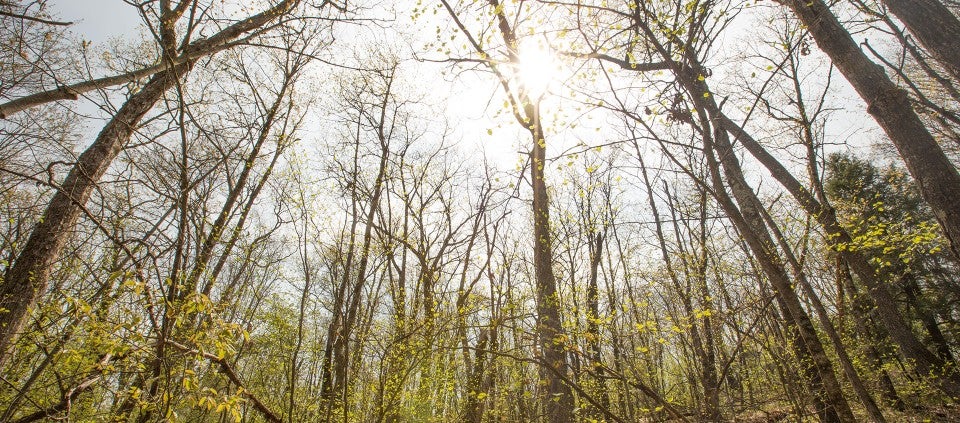Four Things You Might Not Know About Trees

“Trees are poems that the earth writes upon the sky,” wrote the poet Khalil Gibran. But they are so much more than that.
“New discoveries show that trees are really sentient beings like ourselves,” explains Kripalu presenter Noel O’Shea, whose work as an arbor culturist in Ireland has given him a unique and in-depth perspective on the life of trees.
Here are four fresh ways to look at trees.
They talk to each other.
“In the last five years, scientists have discovered amazing activity between trees,” says Noel, who works with arborists and tree surgeons to preserve forest and plant and rejuvenate trees.
According to new research by forester and University of British Columbia professor Suzanne Simard, leader of the Mother Tree project, trees interact and communicate to help one another flourish, using an underground network that she compares to the neurons in the brain.
Trees have continued to provide for our needs as we’ve evolved.
“They’ve kept us alive for millions of years, sharing so much bounty that we take for granted—shelter, food, tools, furniture, paper, currency, medicine,” Noel says. “Trees have walked with man since the beginning of time. They’re the most unselfish beings on the planet.”
Kevin “Moose” Foran, longtime Grounds Supervior at Kripalu, echoes that statement, describing trees as a reminder of selflessness and dedication. “They hold the earth’s skin together, they are the glue which stops the soil from running off into the sea. Trees are nature’s characters on a stage dancing to us, blessed to be their audience.”
And they also hold the key to our future. “They are part and parcel of addressing climate change,” Noel says.
Trees support our mental health.
Time spent in nature, especially in forests rich in conifers, exposes us to a class of naturally occurring, highly beneficial chemicals called phytoncides, which have been shown to reduce blood pressure and the stress hormone cortisol, and improve immune function by building the natural killer (NK) cells that fight disease.
Japan has been well ahead of the curve in recognizing this. In the 1980s, Japanese mental health experts prescribed a nature therapy called shinrin-yoku, which translates as forest bathing, to help restore balance.
“These results are lasting and measurable up to a month following a single two-hour forest bathing experience,” says Mark Roule, faculty member for the Kripalu School of Mindful Outdoor Leadership.
Watching trees helps us learn to pay attention.
“So many of us take in trees with one glance—we think of them as static because they don’t move around,” says Nancy Hugo, who has been studying and writing about trees for 40 years. But when we take time to really see them, trees offer an avenue into cultivating seasonal awareness and mindfulness, Nancy says.
“We can pay attention to the subtleties that come between the markers that most people notice, which is whether the leaves are out or not. It’s deeper and richer to know that the tiny bud scales that are falling off the beeches are also making a sound and, if you get quiet enough, you can hear it.”
In her talks and programs, Nancy shares tips for how to look closely at trees—for example, by following the same tree over the course of the year, making written records, and looking down as well as up to discover the information the tree has left on the ground. She likens tree detritus to shells on the seashore.
“There is joy and learning and huge pleasure in the process of discovery, and a sense of connection to the world,” Nancy says. “I cannot imagine how much less rich my life without this deeper knowing.”
© Kripalu Center for Yoga & Health. All rights reserved. To request permission to reprint, please e-mail editor@kripalu.org.